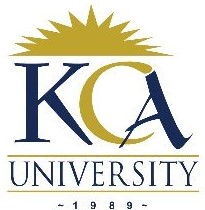
UNIVERSITY EXAMINATIONS: 2016/2017
EXAMINATION FOR THE DEGREE OF BACHELOR OF SCIENCE
IN INFORMATION COMMUNICATIONS TECHNOLOGY
BCT1201 PRINCIPLES OF DATA COMMUNICATIONS
FULL TIME/PART TIME
DATE: DECEMBER, 2016 TIME: 2 HOURS
INSTRUCTIONS: Answer Question One & ANY OTHER TWO questions.
QUESTION ONE: 30 MARKS (COMPULSORY)
a) Differentiate between the following terms. (4 Marks)
i. Data communication
ii. Telecommunication
b) Explain the following modes of transmission . (4 Marks)
i. Half-duplex
ii. Full-duplex transmission
c) With help of a diagram explain the basic communication model. (5 Marks)
d) What are the benefits of having computer networks? (5 Marks)
e) Explain four performance parameters of computer network transmission media.
(4 Marks)
f) With the help of appropriate diagrams describe the characteristics of the sound
wave/analog signal.
(6 Marks)
QUESTION TWO: 20 MARKS
a) Describe the following types of networks. (6 Marks)
i. Metropolitan Network (MAN)
ii. Wide Area Network (WAN)
iii. Virtual Private Network (VPN)
b) Define the ISO OSI reference Model (2 Marks)
c) Discuss three benefits of OSI reference model (3 Marks)
d) In the OSI reference model, explain the concept of data encapsulating and deencapsulation. (4 Marks)
e) Explain what happens to a piece of data at the presentation layer of the OSI reference
model (3 Marks)
f) At the data link layer a trailer is added. What does it contain and what is its use.
(2 Marks)
QUESTION THREE: 20 MARKS
a) Differentiate between terms (4 Marks)
i. Encoding and Modulation.
ii. Digital signaling and Analog signaling
b) With the help of diagrams, illustrate the following encoding schemes. (4 Marks)
a. Non-Return to Zero-Level (NRZ-L)
b. Non-Return to Zero Inverted (NRZI)
c) Explain the following types of errors, stating what causes them and how to prevent
them. (4 Marks)
i. Crosstalk
ii. Attenuation
d) Describe how the following error detection techniques work. (4 Marks)
i. Checksum
ii. CRC
e) Automatic Repeat reQuest (ARQ) is a mechanism for error correction by
retransmission for errors that occur during data transmission. By use of appropriate
diagrams describe the following types ARQ: (4 Marks)
i. Stop-and-wait ARQ
ii. Continuous ARQ
QUESTION FOUR: 20 MARKS
a) Explain any four features of TCP/IP that make it popular (4 Marks)
b) Discuss any four advantages of digital transmission over analog transmission.
(4 Marks)
c) Using diagrams illustrate the following digital dataanalog signal modulation
techniques. (6 Marks)
i. Amplitude Shift Keying (ASK)
ii. Frequency Shift Keying (FSK)
iii. Phase Shift Keying (PSK)
d) Differentiate between logical and physical network topologies. (2 Marks)
e) By the help a diagrams, describe the following types of multiplexing techniques
(4 Marks)
i. Frequency Division Multiplexing(FDM)
ii. Time Division Multiplexing (TDM)
QUESTION FIVE:20 MARKS
a) With the help of a diagram, describe the following circuit configuration.
(4 Marks)
i. Point-to-point
ii. Multipoint
c) By use a diagrams, differentiate between the single-mode and multi-mode fiber optic
cable in their features and functionality. (6 Marks)
d) Giving examples, briefly explain the components of a computer network.
(7 Marks)
e) Explain the following network devices stating the OSI layer in which they operate.
i. Network Interface Card (NIC) (1 Mark)
ii. Router (1 Mark)
iii. Bridge (1 Mark)
